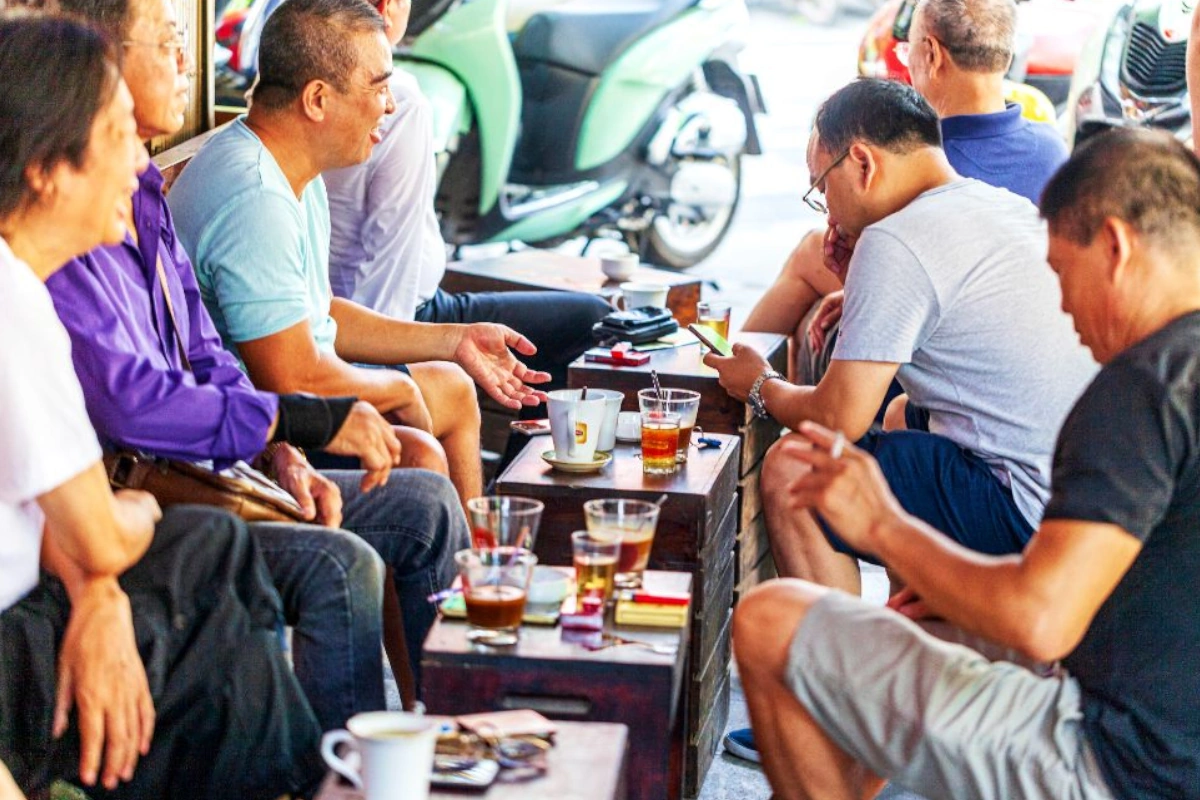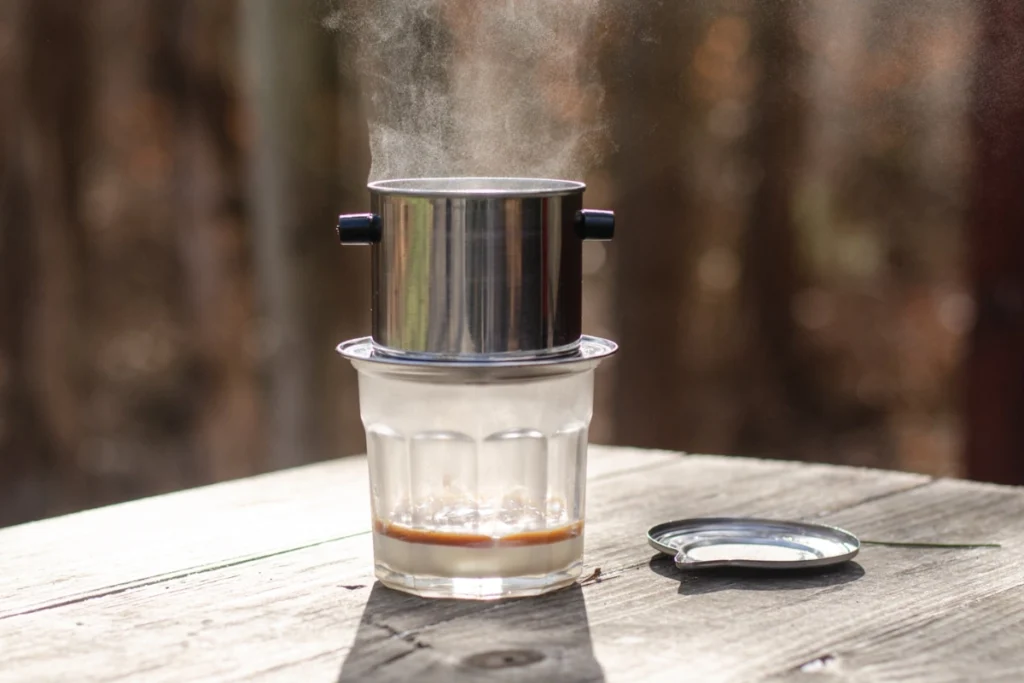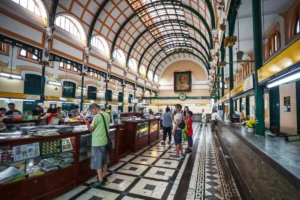
Vietnamese Coffee Culture: From Traditional to Modern Cafes
Vietnam is not just a land of stunning landscapes, rich history, and vibrant culture; it’s also one of the world’s largest coffee producers, second only to Brazil. With coffee deeply woven into the fabric of daily life, Vietnamese coffee culture is a unique blend of tradition and innovation. From the bustling streets of Hanoi to the modern cafes of Ho Chi Minh City, coffee in Vietnam offers an experience that is both rich in history and brimming with contemporary flair. This article explores Vietnam’s coffee culture, from traditional brewing methods to the rise of trendy, modern cafes.
1. A Brief History of Coffee in Vietnam
Coffee was first introduced to Vietnam by French colonists in the 19th century, and it quickly became a staple of Vietnamese culture. The fertile highlands of Central Vietnam, particularly in regions like Da Lat and Buon Ma Thuot, provide ideal conditions for coffee cultivation. Over the decades, Vietnam has developed a unique coffee culture that reflects the country’s history, traditions, and adaptability.
Key Points of Vietnam’s Coffee History:
- French Influence: The French introduced coffee to Vietnam in the late 1800s, and the drink became popular among locals, especially in urban areas.
- Robusta Dominance: Vietnam predominantly grows Robusta beans, known for their strong, bold flavor and high caffeine content. This variety sets Vietnamese coffee apart from the milder Arabica commonly found in Western countries.
- Economic Growth: Coffee production surged in the late 20th century, making Vietnam a global coffee powerhouse and integral to the local economy.
2. Traditional Vietnamese Coffee: Brewing Methods and Styles
Vietnamese coffee is known for its bold taste, distinctive preparation methods, and unique flavors. Traditional coffee brewing in Vietnam often involves simple yet iconic techniques that have been passed down through generations.
Popular Traditional Vietnamese Coffee Styles:
Cà Phê Phin (Vietnamese Drip Coffee):
The most traditional way of brewing coffee in Vietnam involves the phin, a small metal drip filter. Ground coffee is placed in the phin, hot water is poured over, and the coffee slowly drips into the cup below. The result is a strong, concentrated coffee that can be enjoyed black (cà phê đen) or with sweetened condensed milk (cà phê sữa). This method emphasizes a slow, mindful coffee experience that allows you to savor each sip.Cà Phê Sữa Đá (Iced Coffee with Milk):
One of the most popular coffee drinks in Vietnam, cà phê sữa đá, combines the intense flavors of Vietnamese drip coffee with the sweetness of condensed milk, served over ice. It’s refreshing, energizing, and perfect for Vietnam’s warm climate.Cà Phê Trứng (Egg Coffee):
A Hanoi specialty, egg coffee is a decadent treat made by whipping egg yolks with sugar, condensed milk, and robusta coffee. The result is a rich, creamy coffee that resembles a dessert, often served in a small cup over hot water to maintain its temperature.Bạc Xỉu:
A Southern Vietnamese variation, bạc xỉu is a milder, milkier version of coffee, often made with more milk and less coffee, making it a popular choice for those who prefer a lighter taste.

3. The Rise of Modern Cafes in Vietnam
While traditional coffee remains beloved, Vietnam’s coffee culture has evolved significantly, blending old and new influences to create a dynamic cafe scene. Modern cafes in Vietnam are not just places to enjoy a cup of coffee; they are social hubs, workspaces, and creative environments.
Trends Shaping Modern Vietnamese Cafes:
Specialty Coffee Shops:
In recent years, specialty coffee shops have gained popularity, focusing on high-quality Arabica beans, precise brewing methods, and a deeper appreciation for the art of coffee. These cafes often source beans directly from local farms, emphasizing sustainability and traceability.Third-Wave Coffee Movement:
The third-wave coffee movement, which emphasizes artisanal brewing, direct trade, and the appreciation of coffee as a craft, has found a strong foothold in Vietnam. Baristas in these cafes experiment with various brewing techniques, such as pour-over, siphon, and AeroPress, catering to coffee enthusiasts seeking a refined experience.Unique Ambiances:
Modern Vietnamese cafes often boast unique designs that blend traditional and contemporary elements. From minimalist and industrial interiors to cafes filled with vintage decor, each space offers a distinctive vibe that appeals to both locals and tourists.Fusion of Coffee and Art:
Many modern cafes double as art galleries, bookstores, or music venues, creating a vibrant cultural scene. This fusion of coffee and art provides a creative space for young Vietnamese artists and musicians to showcase their work.
4. Iconic Coffee Shops to Visit in Vietnam
Whether you’re a first-time visitor or a seasoned traveler, experiencing Vietnam’s diverse coffee scene is a must. Here are some iconic cafes that capture the essence of Vietnamese coffee culture:
Giảng Cafe, Hanoi:
Founded in 1946, Giảng Cafe is credited with inventing egg coffee. This historic spot offers a cozy atmosphere where you can savor the original cà phê trứng in its birthplace.The Workshop, Ho Chi Minh City:
A pioneer of the specialty coffee movement in Vietnam, The Workshop is known for its spacious, industrial-chic design and a focus on high-quality, single-origin coffee. It’s a popular spot for coffee aficionados and remote workers alike.Cong Caphe:
With its vintage, military-themed decor inspired by the 1970s, Cong Caphe is a popular chain that combines nostalgic design with innovative drinks, such as coconut coffee. Its unique ambiance and creative menu have made it a favorite among young locals and tourists.Hidden Gem Coffee, Hanoi:
Tucked away in an alley, Hidden Gem Coffee lives up to its name with its recycled decor and commitment to sustainability. The cafe features upcycled furniture and decor made from discarded materials, creating an eco-friendly yet artistic atmosphere.Reng Reng Cafe, Da Nang:
This minimalist cafe focuses on hand-brewed coffee using various methods, including Chemex, siphon, and pour-over. It’s an excellent place to explore the nuances of Vietnamese coffee with a modern twist.
5. The Role of Coffee in Vietnamese Social Life
Coffee is more than just a drink in Vietnam; it’s a cultural experience that brings people together. Whether it’s a quick cà phê sữa đá at a street-side stall or a leisurely afternoon at a chic cafe, coffee plays a central role in socializing, conducting business, and enjoying life.
Cultural Aspects of Coffee in Vietnam:
Social Hubs:
Cafes in Vietnam are gathering places for people of all ages. From students and professionals to artists and retirees, coffee shops are where people meet, work, and socialize.Morning Rituals:
A typical morning in Vietnam often begins with a cup of strong drip coffee, enjoyed slowly at a local cafe while reading the newspaper or chatting with friends.Coffee as a Business Culture:
In Vietnam, many business meetings and negotiations take place in cafes rather than offices, highlighting the importance of coffee in professional settings.
6. Sustainability in Vietnamese Coffee
As coffee culture continues to evolve, there is a growing awareness of the need for sustainable practices within the industry. From farm to cup, efforts are being made to reduce the environmental impact of coffee production and consumption.
Sustainable Practices in Vietnamese Coffee:
Supporting Local Farmers:
Many modern cafes prioritize sourcing coffee directly from local farms, ensuring that farmers receive fair prices and encouraging sustainable farming methods.Organic and Shade-Grown Coffee:
Some coffee producers in Vietnam are moving towards organic and shade-grown coffee, which helps preserve biodiversity and reduce the use of harmful pesticides.Reducing Waste:
The rise of eco-friendly cafes in Vietnam reflects a broader commitment to sustainability, with many establishments reducing single-use plastics, offering reusable cups, and using upcycled materials in their decor.
7. How to Enjoy Vietnamese Coffee Like a Local
To fully immerse yourself in Vietnam’s coffee culture, here are some tips to enhance your experience:
Try Different Brewing Methods:
Experiment with various brewing styles, from traditional drip coffee to specialty pour-overs, to appreciate the diversity of Vietnamese coffee.Enjoy Coffee at a Street Stall:
For a truly authentic experience, pull up a plastic stool at a street-side coffee stall, where you can enjoy your coffee amidst the hustle and bustle of local life.Order Like a Local:
Don’t be afraid to order your coffee the way locals do—whether it’s a strong cà phê đen or a sweet and creamy cà phê sữa đá.Take Your Time:
In Vietnam, coffee is not rushed. Take your time to savor the flavors and the atmosphere, whether you’re in a traditional cafe or a modern coffee shop.
Conclusion: Vietnamese Coffee Culture
Vietnamese coffee culture is a rich tapestry of tradition and modernity, offering a unique blend of flavors, experiences, and social connections. From the time-honored phin filter to the sleek, minimalist specialty cafes, coffee in Vietnam is more than just a beverage—it’s a way of life. By exploring the country’s diverse coffee scene, you’ll not only enjoy some of the best coffee in the world but also gain a deeper appreciation for Vietnam’s culture, history, and evolving landscape.
Whether you’re a seasoned coffee lover or a curious traveler, Vietnam’s coffee culture invites you to slow down, savor each sip, and experience the country in a whole new way. From traditional brewing methods to cutting-edge cafes, the journey through Vietnam’s coffee culture is as rich and rewarding as the drink itself.
Key Takeaways: Vietnamese Coffee Culture
- Vietnamese coffee culture is deeply rooted in tradition, with unique brewing methods like the phin filter and iconic drinks such as egg coffee.
- The rise of modern cafes reflects the influence of global coffee trends while maintaining a distinct Vietnamese character.
- Coffee plays a significant role in Vietnam’s social and business life, serving as a gathering place for people of all backgrounds.
- Sustainable practices are becoming increasingly important in Vietnam’s coffee industry, with a focus on supporting local farmers and eco-friendly initiatives.
By embracing both the old and new aspects of Vietnamese coffee culture, you’ll not only enjoy a delicious beverage but also connect with the heart of Vietnam’s vibrant and evolving coffee scene.
Delve more: Cultural Etiquette in Vietnam | Discovering Vietnam





